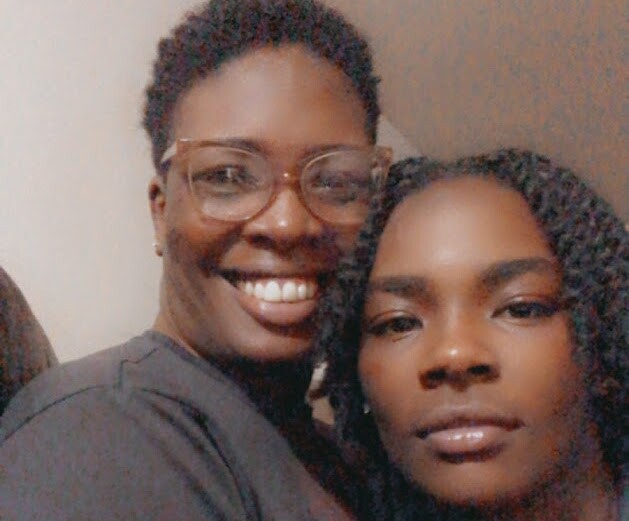CLEVELAND — No one expected she would end up dead.
On February 6, 2021, 24-year-old Destiny Johnson was at a party at The Luckman Apartments on E. 12th Street in downtown Cleveland.

The first sign of trouble was a call to police reporting multiple guns and a homicide suspect at the party.
Then at 03:22 a.m., Destiny's friend called 911. Destiny had been shot. When Cleveland police officers arrived, they found her in a stairwell on the 19th floor. She was taken to MetroHealth Medical Center. She didn’t survive the surgery.
RELATED: Homicide investigation underway in Cleveland after 24-year-old woman shot, killed at downtown party
More than a year later, her case remains unsolved.
Destiny's mother, Crystal Newkirt, said, "To know this person is still out there and may do this again to somebody else's child - if he hasn't already - I can't focus, I cannot sleep."
Despite multiple requests, the Cleveland Division of Police refused to provide information about why Destiny's case remains unsolved.

Killer Caseloads
Through a public records request, News 5 Investigators found caseloads for Cleveland's homicide detectives exceed numbers recommended by experts.
In 2021, the detective assigned to Destiny's case was listed on 36 other homicide cases.
The city's 173 homicides were assigned to four-member teams, which means the unit's 21 detectives each averaged eight new cases.

Experts recommend homicide detectives be assigned no more than three to five new cases per year.
"It is bizarre what we expect a homicide detective to be able to do," said Tom Hargrove of the non-profit Murder Accountability Project, which tracks unsolved homicides in the U.S.
"The guidance from the justice department, from the FBI, from criminologists, is that something is wrong if you are assigning more than five homicides a year to a homicide detective," he said.
'State of emergency'

Michelle Bell's only son, Andre Brown, and his friend, Mario Blanton, 31, were shot and killed while in a 2003 gray Honda Element SUV on February 9, 2019. The shooting occurred in the 900 block of Stevenson Road in Cleveland just before midnight. Neighbors reported hearing gunfire.
"This is a state of an emergency," Michelle Bell said. "It has to get the treatment it deserves, which is urgent."
Their case remains unsolved.
"Personally, it hurts," Bell said. "That’s not acceptable for me and it shouldn’t be acceptable for anybody, especially our leaders."
Disregarded recommendations
Experts have recommended Cleveland increase the number of detectives in its homicide unit for years.
In January 2020, The National Public Safety Partnership (PSP) found Cleveland had 12 case-carrying homicide detectives. The report recommended the city add "26 new detectives and a qualified crime analyst" to the unit.
View the full 2020 report here.
The report said adding staff would "alleviate the burden of heavy caseloads" and ultimately improve the city's ability to solve homicides.
A 2016 report by the Police Executive Research Forum (PERF) found each detective worked an average of 10 new homicide cases during the year, "which is twice the recommended number according to research on homicide investigation best practices."
The report recommended increasing staffing, so each detective is the lead on an average of "two to six new homicides case each year."
The report found homicide detectives were "doing the best job they can" given their limited resources.
Cleveland added detectives to the unit in 2021, increasing the number of detectives from 12 to 21.
Unsolved in CLE
- Unsolved in CLE
- Murder data disparities
Click the Murder data disparities button above to learn how homicide data reported by Cleveland police differs from data provided by the FBI.
The consequences of failing to adequately staff the city's homicide unit are clear.
Over a ten-year period, News 5 Investigators found only 60% of the city's 1,342 homicides were cleared, and 545 cases remain unsolved.
The FBI’s Uniform Crime Reporting (UCR) Program is supposed to generate “reliable statistics” about crime in the United States.
When we compared information about from the FBI’s reports to homicide clearance rates the City of Cleveland shared with News 5, we found significant disparities.
For example, Cleveland told us it solved 72% of the homicides that occurred in 2019. The FBI reported Cleveland solved only 27.27% of homicides in 2019.
We repeatedly asked the City of Cleveland why the numbers about the discrepancies but have yet to receive a response.
So why hasn't Cleveland added staff?
For more than two months, News 5 Investigators requested to interview Cleveland homicide detectives and police officials.
After scheduling an interview in March, the city postponed the interview and has yet to reschedule.
Crystal wasn't surprised we couldn't get answers.
"I have to call constantly. Leave messages. Only to maybe get a return call a month or two later," she said. "That’s like the most, to me, the most disrespectful thing that a person can really endure."
In the police report, two witnesses said they could positively identify the man who shot Destiny. They described her killer as a black man, 5’10”, wearing a black hat and red jogging suit with white letters. They said was walking down hallways holding his gun in front of him and pointing it directly at people. They also said he punched a woman in the face before he shot Destiny.
With the description and witnesses, Crystal wants to know why police have been unable to find her daughter's killer.
"Every day I look for all zeros on come on my phone from a detective to let me know that they’ve got somebody," she said. "It hasn’t come yet. "




